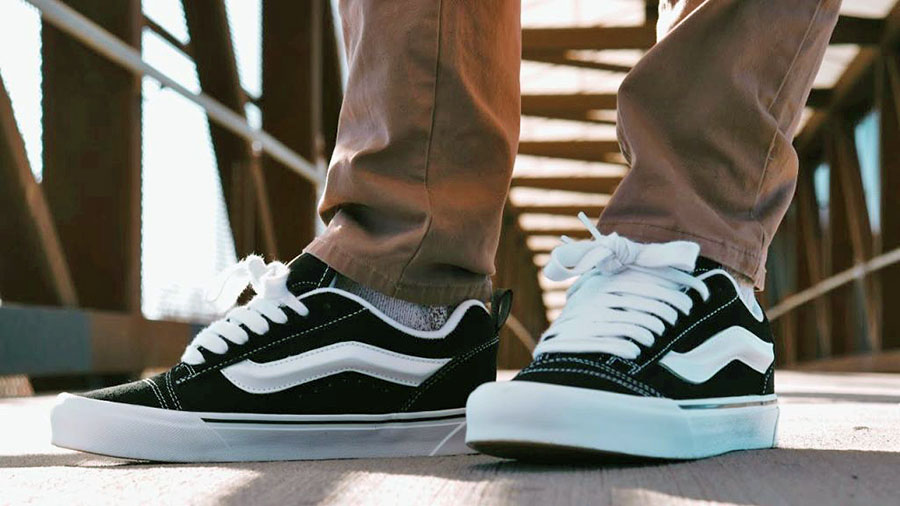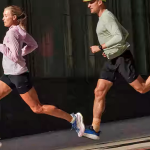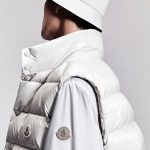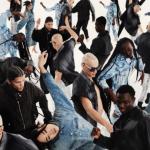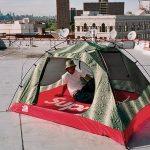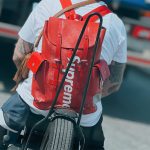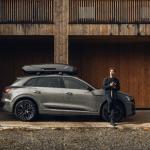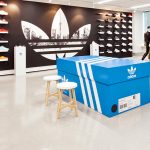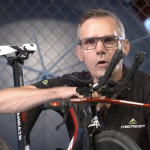VF Corporation President and CEO Bracken Darrell said the fiscal third quarter for the company was “particularly disappointing” as total revenue fell 16 percent, or down 17 percent in constant-currency (CC) terms, to $3.0 billion in the period ended December 31, compared to down just 2 percent (-4 percent CC) in the fiscal 2024 second quarter.
Darrell had the tough conversations first in the company’s quarterly conference call with analysts as he focused on the struggling Americas business, which was down 24 percent (-25 percent CC) to $1.59 billion in the third quarter. he said the decline was largely due to continued struggles at Vans, but sister brands The North Face, Dickies and Timberland didn’t shine either. Supreme was the only brand called out for a strong performance in the quarter.
“We now have our new commercial organization and [the] Americas platform in place and are confident this will translate to improved results for the brand and across the rest of our brands,” Darrel emphasized. “At Vans, the decline looked like it did last quarter by the numbers, but underneath there’s a lot changing. I’ve been spending more than half of my time with our team reviewing strategies, new products and marketing plans. Product and marketing are obviously every brand’s foundation.”
Vans was down 28 percent (-29 percent CC) to $668.2 million in the third quarter, inclusive of deliberate actions taken to right-size inventories in the wholesale channel. The business was down in all three regions. The CEO said the trend was broadly in line with the first half when accounting for the intentional reset actions taken in the third quarter to clean up the marketplace and reposition the wholesale channel.
“These [actions] negatively impacted global revenue by about 5 points in Q3 and may have a further impact in Q4 as we complete the work,” Puckett added.
Darrell stressed that all brand turnarounds have certain features, including a clear brand purpose, and a product plan that will eventually result in growth and marketing that weaves them together. “If you look at the history of every great brand, a founder creates a trademark and launches its products under it,” he added.
“As truly strong brands move through time, ownership evolves and almost becomes shared. The best brands learn to share and pay respect to their most important customers, those who are the most influential. While customers don’t create products and marketing campaigns usually, they are the ones who drive the success through their ownership and advocacy,” the CEO offered as he outlined the issues with Vans.
“During the period from 2015 to 2020, the brand really took off,” he continued. “It got energized and accepted by new groups thanks to cultural trend-makers. More celebrities started to wear them. Moms bought them for their kids, and we actually took our eye off the core youth audience that had been the lifeblood of Vans. The brand had to evolve. But rather than continue to respect and serve the youth audience that had built the brand, we only fed the trend that grew it rapidly.”
He said Vans largely withdrew marketing to the core youth and instead focused on everyone else when looking for one key point that has driven the brand down over the last two years.
“We extended our line-up to lower price points and value stores, and we offered more and more color waves of the same old things to pour more fuel into a fire built on a trend. The trend fuel burned out 18 months ago. The trend moved on. When a brand loses its way, the answer starts at its foundation – its purpose and target audience,” he stressed.
“So now I’ll whet your appetite with my opinion about where we are,” he said. “We have created a package of a deeply rooted brand purpose, clear segmentation, an 18-month marketing plan, and a solid product roadmap. This package is in place. We have a map back to growth for Vans. I’m not ready yet to commit to when the brand will return to growth, but it will. In the meantime, let me talk about a few dynamics we’re starting to see emerge.”
Darrell said the company continues to see a strong performance from newer things in the Vans product portfolio, which are becoming a larger share of the business.
“The Knu Skool, for example, is still small, but it’s growing well, especially among young girls in the U.S. I’m not pointing that style to suggest it’s the turnaround shoe. There won’t be a single one as you will see. We will have a cascade of new products over the next several years, but I am encouraged by how this style is resonating with the very cohort we’ve lost over recent years,” he explained.
Darrell said they are resetting the marketplace in Q3 and Q4, changing the marketing and beginning to launch relevant new products in the coming seasons.
“Along with the work we are doing on brand purpose, product innovation and marketing, we’re resetting the marketplace to accelerate our progress now,” he explained. “This marketplace clean-up will integrate with products and marketing spun from the same storylines and that is a new approach relative to the past few years. I’m excited about what’s ahead.”
CFO Matt Puckett said the turnaround work remains in progress at Vans.
“During the quarter we took actions to reset the wholesale channel to ensure the brand’s market positioning and product assortments are aligned with the brand direction. The impact on revenue in the quarter was approximately $50 million,” he said.
In the call’s Q&A segment of the call, the execs talked about refreshing the brand product at retail and revealed that they were removing slow-moving inventory from retailers to create open-to-buy for stronger product that was moving in the market.
“So we’re pulling that back out or they’re returning it, and then we’re opening up basically an open to buy for the product that is selling. So it’s really just cleaning out the channel,” Darrell responded when asked about the mechanics of refreshing the Vans brand at retail.
“I think in most cases, the product is still kind of flowing and the work is happening, but you’re accruing for returns, which has an inventory implication in that entry. That’s in the number,” Puckett responded. “I think overall, we’ve just been able to aggressively sell through excess inventories, again, in our own outlet stores, in particular, as well as leveraging, in some cases, the off-price channel within the wholesale space. Working aggressively to pull back on buys, which we said all along, we’re working to do and probably been a little bit conservative in some of our planning in terms of that may ultimately play out, so a little bit of favorability there as well.”
When asked about the Vans DTC business, Darrell said that “Vans has a very large, especially U.S.-based bricks-and-mortar business as well as an online business.”
“A lot of people may not realize that we’re one of the most developed DTC businesses,” he shared. “Our North America business [is] one of the most developed DTC businesses in all of footwear and apparel. I mean we’re something like 60 percent of our total business is DTC in the U.S., maybe even higher than that. So it’s very developed. I don’t expect that to change dramatically one way or the other. I imagine the e-comm will grow and the bricks-and-mortar will shrink relative to each other. And hopefully, wholesale will begin to grow relative to the brick our own bricks-and-mortar.”
When asked about the marketing efforts to help drive the Vans business with that core consumer, Darrel responded that it was too early to discuss the direction for the brand until a new brand president is hired and wants to leave some latitude to make some changes. Former Vans Brand President Kevin Bailey left that position in November and is now working on the VF Reinvent program.
Darrell did offer that they have a strong, very punctuated plan that integrates the marketing insights and the marketing programs with the new products that are launching.
“I’ve been through both sides of that equation, the two of them together, two or three times now, and I’m still not done, but I feel good about it, very good about it,” Darrel said.
“We do not have plans to bring back the Warped Tour, although we’ve certainly crossed our mind and we’re talking about it a little bit,” the CEO responded when asked about the Vans core marketing concert tour that ran every summer from the mid-90s until 2019. “The Warped Tour was a really powerful thing, but it took time to build. It would take quite a bit of time to rebuild. I think the objective though, of making sure that we’re really deeply in the hearts and minds of the youth audience is mission-critical for us.”
On the inventory front, Puckett said that the Vans position at the end of the quarter was down almost 30 percent year-over-year compared to the overall VF Corporation decline of 17 percent year-over-year.
“So Vans is in a really good place, I think, relative to where we sit from a top line and the reset actions in the Vans marketplace with the actions we’re taking is, by and large, going to be about where we would like it to be as we get towards the end of the fiscal year, maybe just modestly higher from a weeks of supply standpoint in the U.S., but pretty close,” the CFO concluded.
“I’m energized by the progress of Vans, including with the search for a new brand president,” Darrell concluded. “There’s more to come.”
Image courtesy Vans

